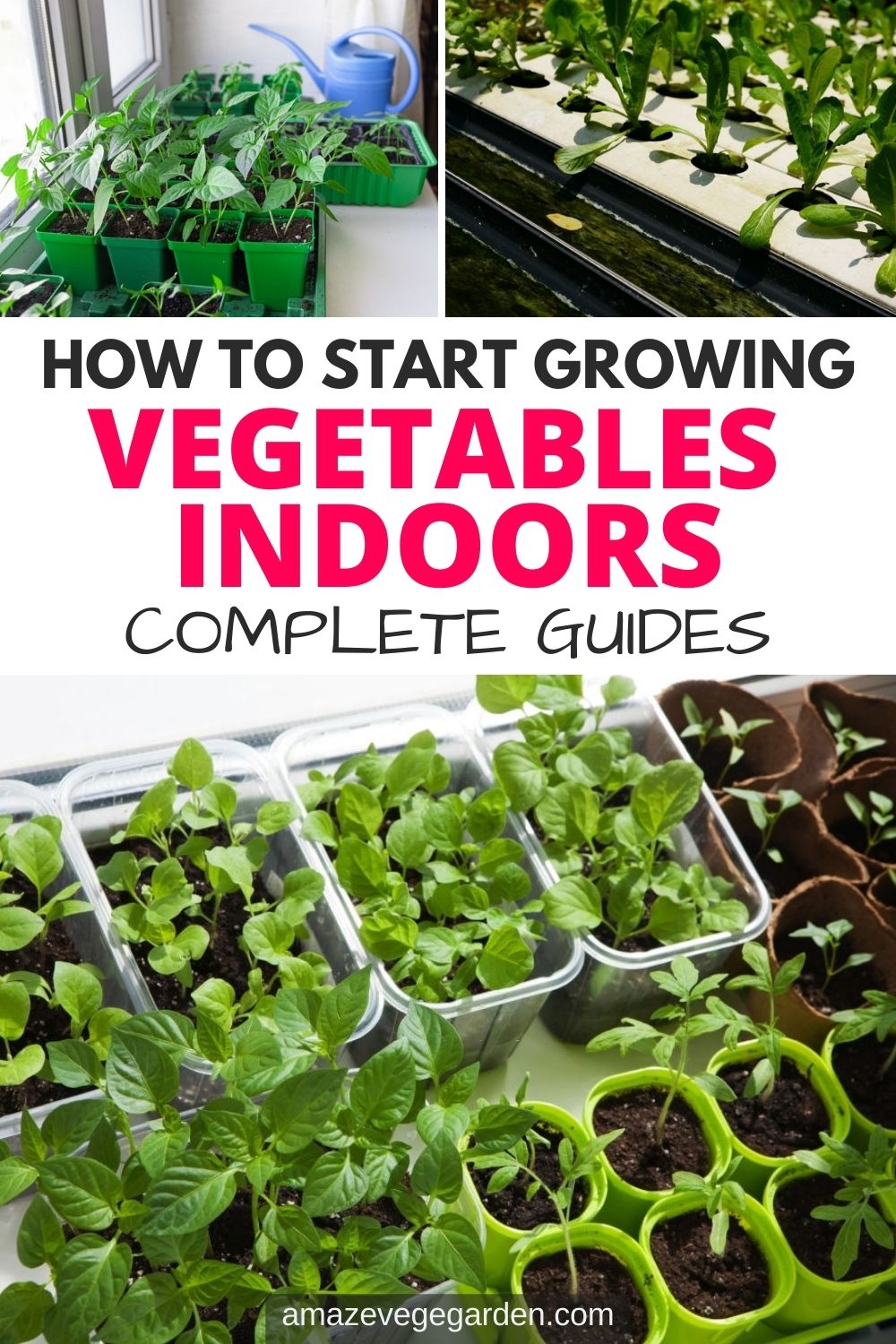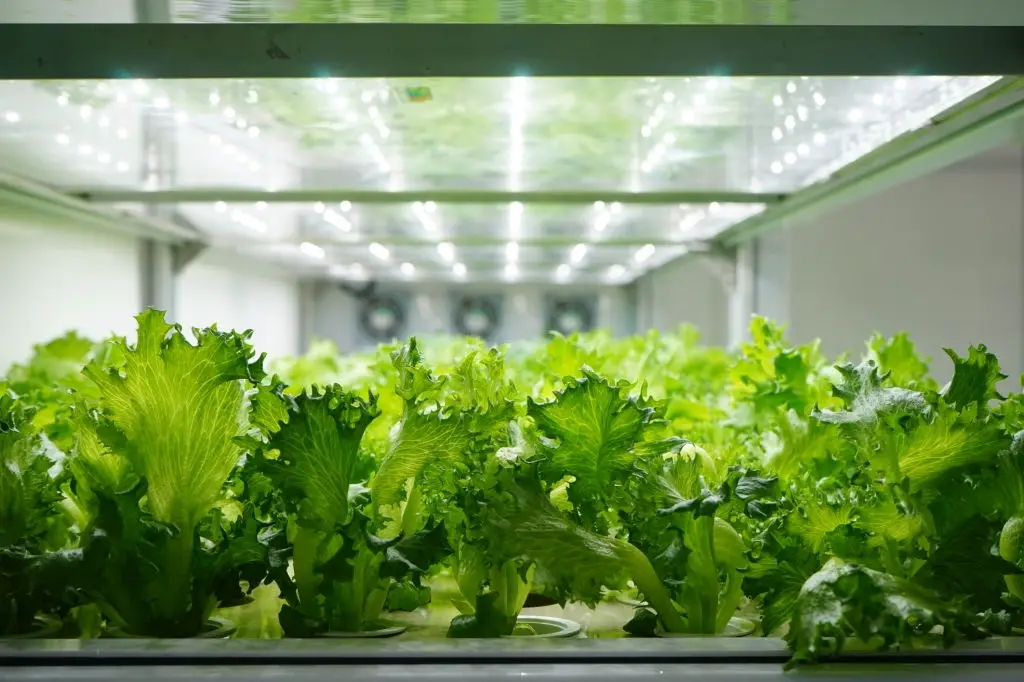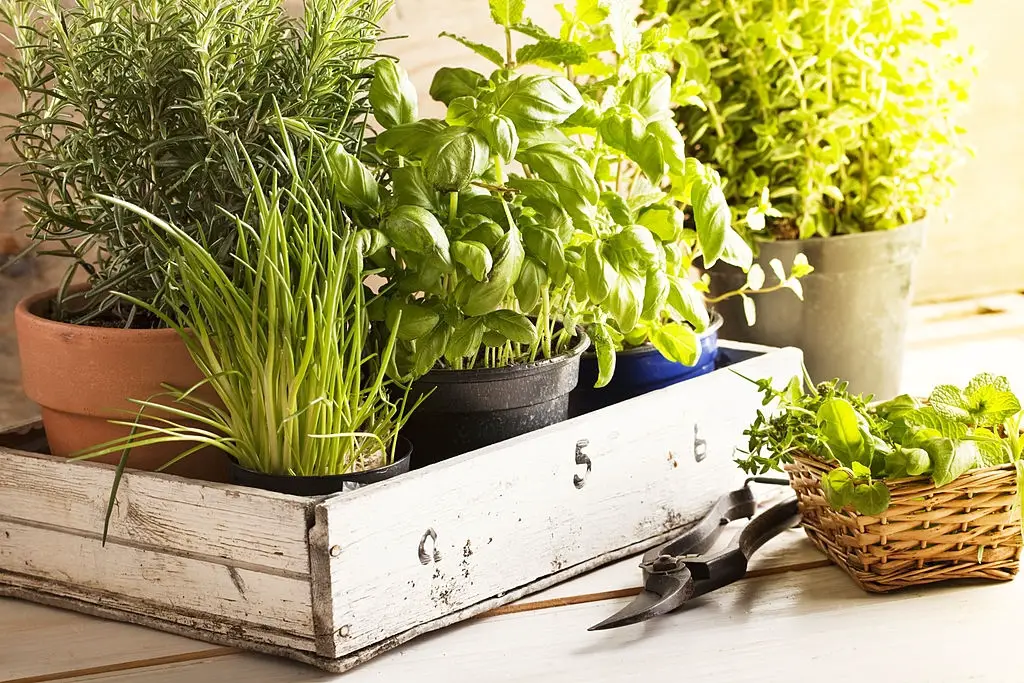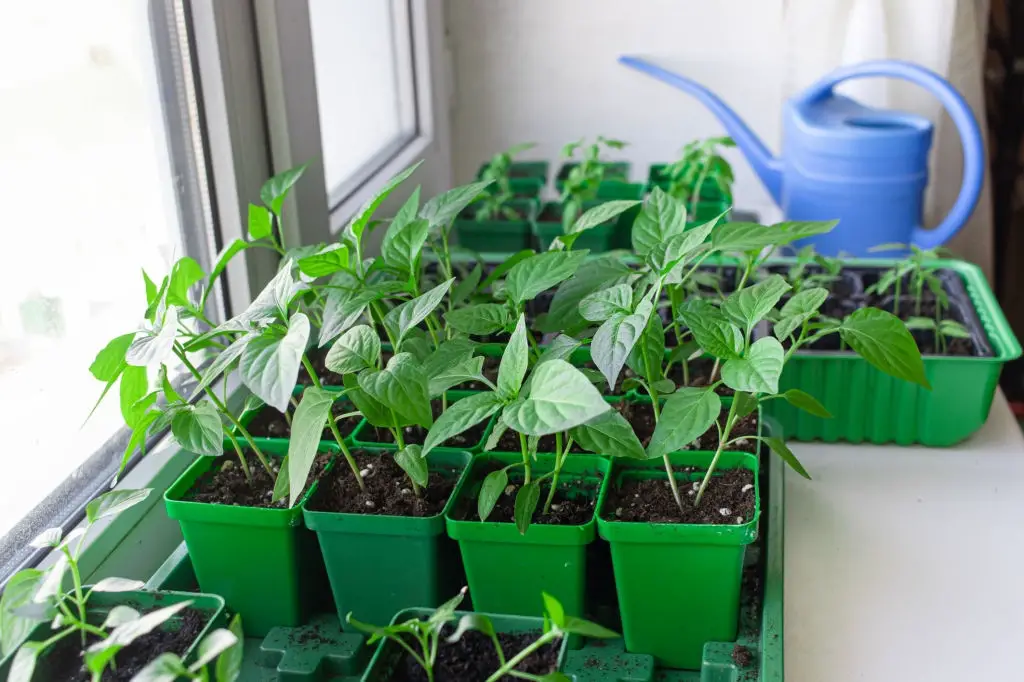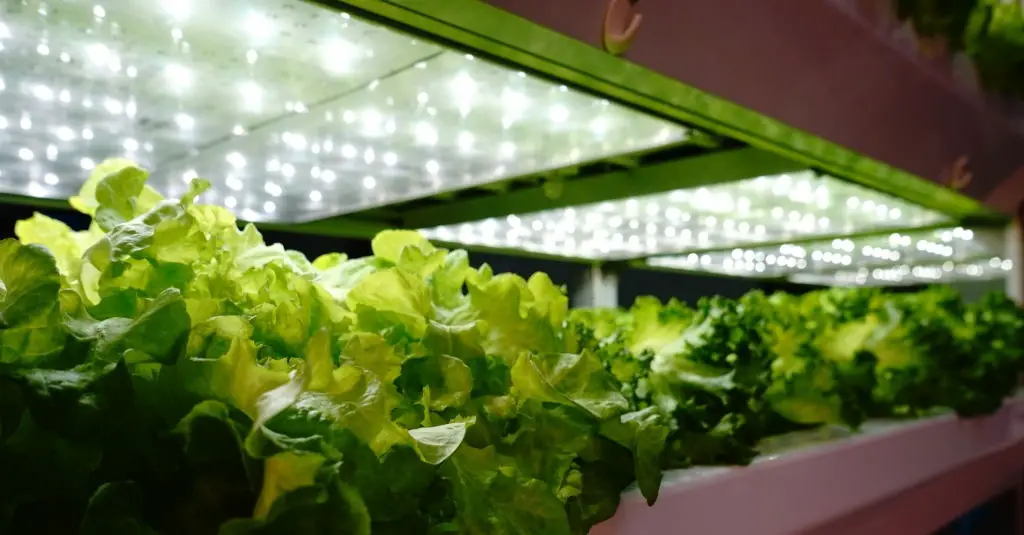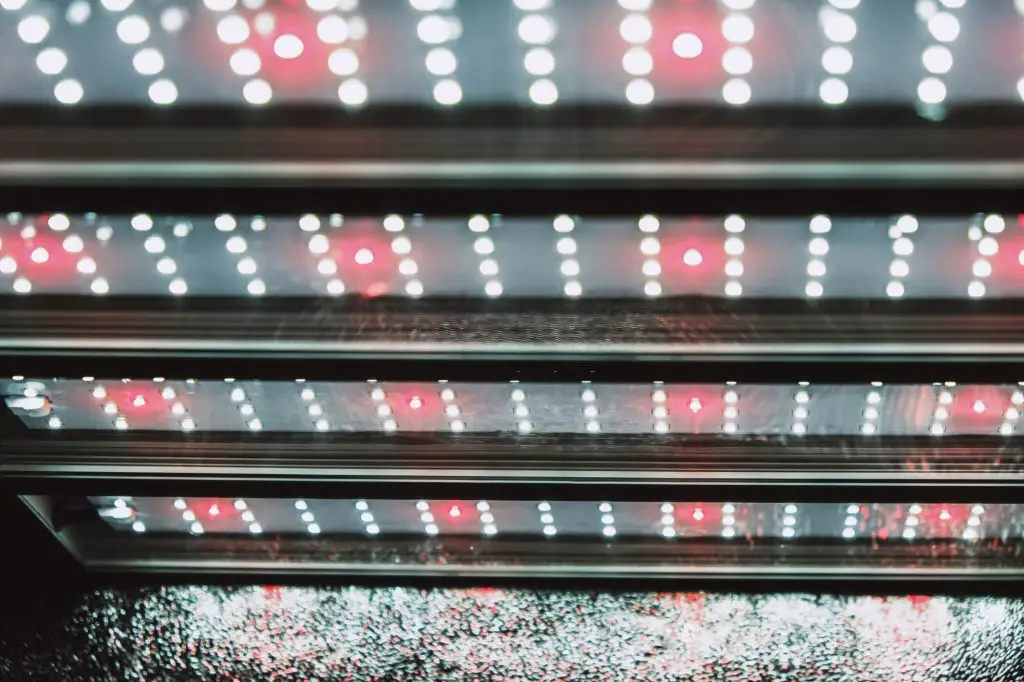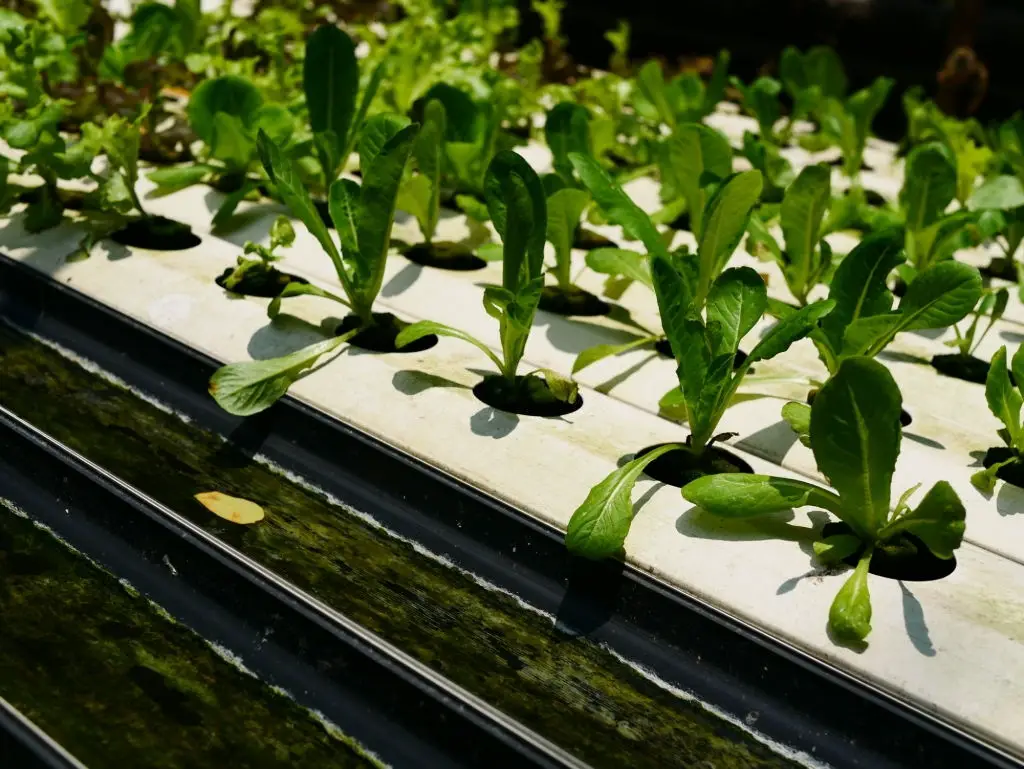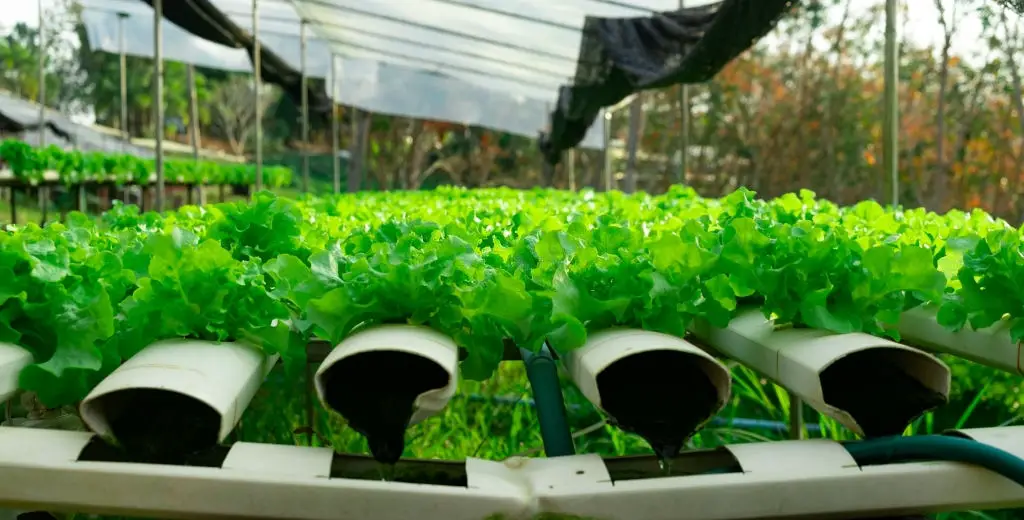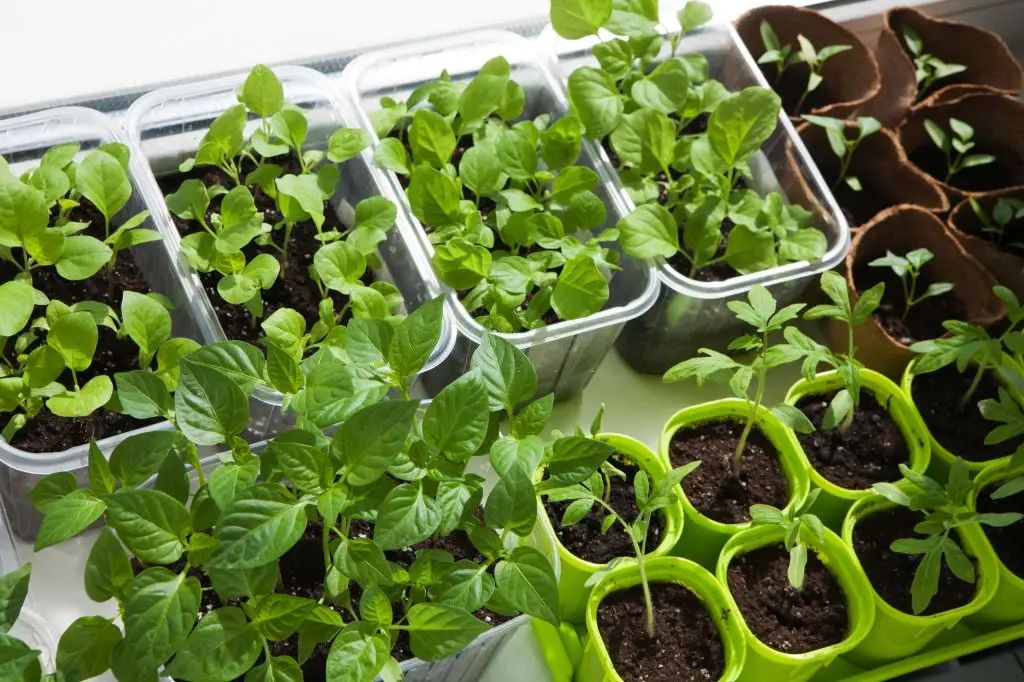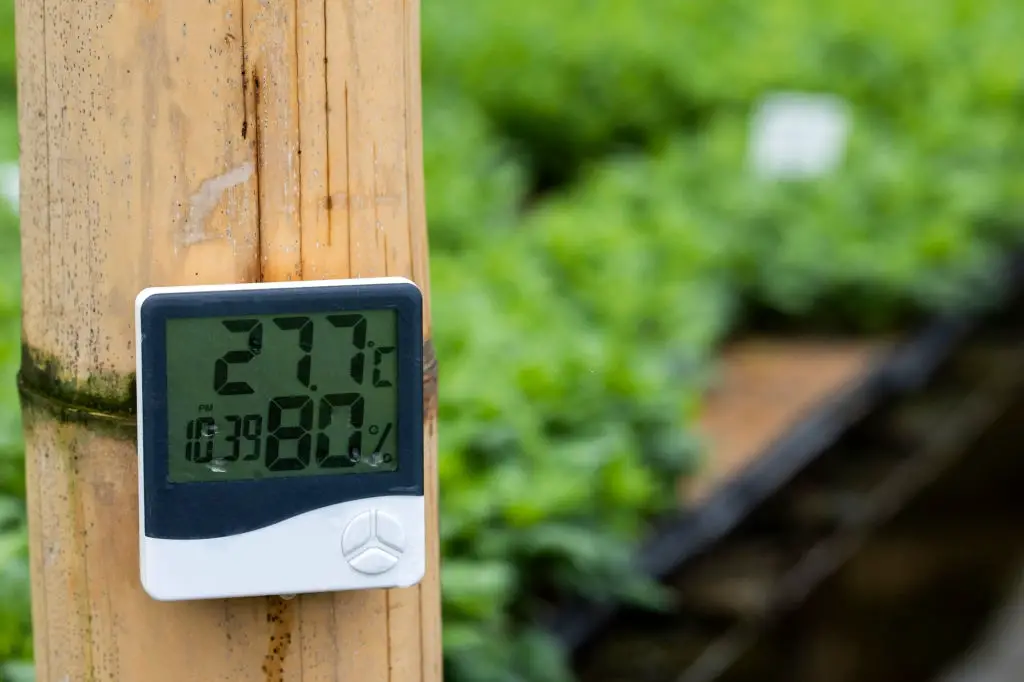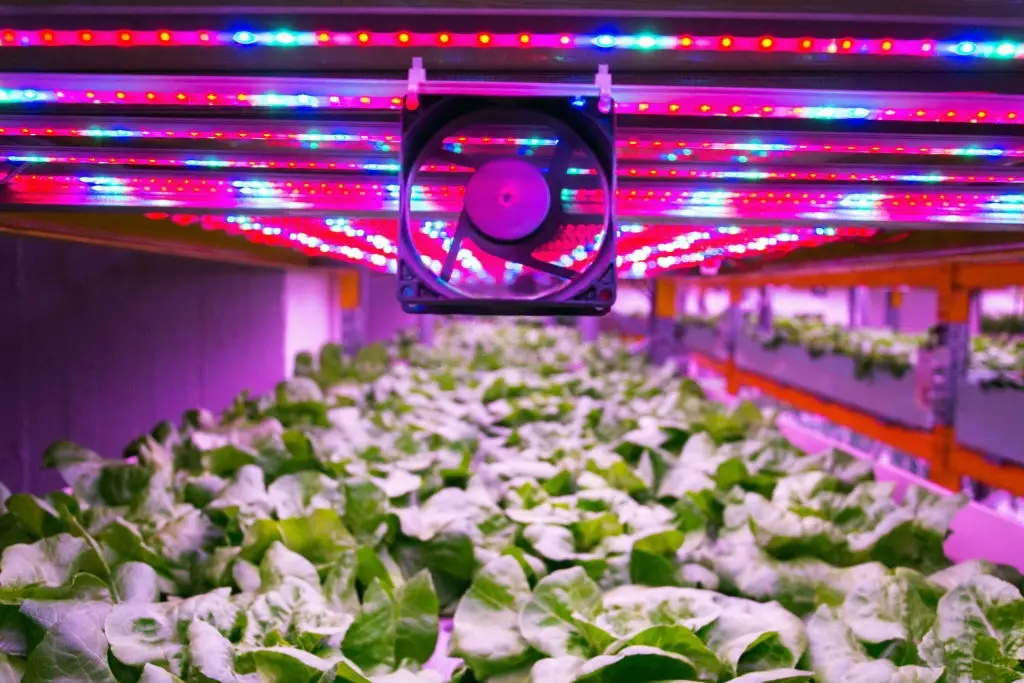When most gardeners think of growing vegetables, they may not even consider growing vegetables indoors. Many vegetables with fruits such as tomatoes, cucumbers, and peppers require an amount of light that most gardeners associate with summer. But artificial lighting and growing media can produce many of the same vegetables that outdoor gardens can.
Below you’ll find a guide on how to start growing vegetables indoors. Once you have your lighting, growing media, containers, humidity, and ventilation straightened out, you can grow vegetables indoors that are just as good as any vegetables you grow outside in the garden.
Why Grow Vegetables Indoors?
There are many benefits to growing vegetables indoors. Even though some aspects of growing plants indoors can be more difficult than growing them in native soil, growing vegetables indoors has a lot to offer gardeners by increasing their production and minimizing the labor needed for plant maintenance.
Here are some of the major advantages of growing vegetables indoors:
- Extend the growing season. Many gardeners get into growing vegetables indoors because it allows them to start vegetables earlier in the spring before the last frost of the year. Indoor gardening also allows them to grow vegetables throughout the winter when growing outdoors can be difficult and uncomfortable.
- Start slow-growing plants in early spring. Certain garden vegetables such as tomatoes, peppers, eggplant, and cucumbers take a long time to mature and bear fruit, so starting them indoors in late winter or early spring to transplant later can help gardeners harvest these vegetables late into the growing season.
- Control over the growing environment. When you grow vegetables out in your garden, you’re at the mercy of fluctuating humidity, light exposure, and temperature. Growing vegetables indoors gives you total control over all elements that affect a growing plant, from germination to harvest.
- Reduced exposure to pests (and pesticides). Gardeners who garden vegetables outdoors are usually forced to resort to pesticides and other intensive gardening practices to fight against outdoor pests like worms, moths, ants, aphids, and beetles. Indoor gardeners don’t have to spend nearly as much time worrying about bugs.
- No threat from outdoor weather. Outdoor vegetables aren’t just vulnerable to changing temperatures and exposure to wildlife. They’re also threatened by extreme weather conditions such as random killing frosts, heavy winds, and battering rains. These are all threats that indoor gardeners don’t have to consider at all.
Even though growing vegetables indoors offers advantages, there are also some unique challenges associated with growing vegetables indoors. Here are some drawbacks to growing things inside (Source: Gardening Know How):
- Lighting can be a problem. Some garden vegetables such as tomatoes and peppers require serious amounts of strong light exposure per day to grow properly. This lighting is not easy to imitate indoors.
- Indoor plants need supplemental humidity. Indoor environments deliberately have reduced humidity due to air conditioning units and ventilation systems. Plants that do better in humid conditions may require additional humidity measures to grow correctly indoors.
- Indoor plants can be messy. If you plant indoor vegetables in potting soil, you might find yourself with a bit of a mess from watering and other maintenance that might cause the soil to spill out. For this reason, hydroponic systems and systems with solid growing media are often preferred indoors.
- Indoor plants can take up a lot of space. To harvest the same amount of vegetables you’d grow outdoors, gardeners may have to dedicate many indoor spaces to their plants. You can solve this problem partially by going with miniaturized versions of popular garden vegetable plants.
- Indoor plants can be at the mercy of household pets. Indoor gardeners don’t have to worry about bugs, birds, squirrels, rabbits, or deer, but they do have to worry about the household dog or cat. Indoor cats, in particular, might be a hassle trying to grow vegetables indoors if they try to use potted plants as a litter box or knock seedlings over.
Growing vegetables indoors might be more difficult in some ways than growing plants outside, but it can make the entire process easier in many ways. Minimizing the challenges of growing plants indoors is mostly about knowing how to manage the major needs of the plants: lighting, growing media, fertilizer, humidity, and ventilation.
Lighting for Growing Vegetables Indoors
By far, the greatest challenge posed to gardeners who are trying to grow vegetables indoors is light exposure. Many fruit-producing vegetables need at least six to eight hours of full sun a day, a light exposure condition that is hard to replicate indoors.
However, other vegetables don’t require full sun or direct sunlight, and these vegetables tend to do better inside. When it comes to lighting for growing vegetables indoors, there are two major light sources to choose from: ambient sunlight and artificial lighting.
Ambient Sunlight for Indoor Vegetables
Ambient sunlight for indoor vegetables is any sunlight collected by the plants when placed near a sunny window. Since this is a weaker, more indirect form of lighting, leafy vegetables and small root vegetables tend to do better in indoor window containers getting their light exposure from ambient sunlight.
Here are some of the vegetables that do well growing in ambient sunlight indoors:
- Chives
- Scallions
- Spinach
- Kale
- Arugula
- Salad greens
- Lettuce
- Beets
- Broccoli rabe
- Carrots
Growing vegetables indoors in ambient sunlight is one of the easiest ways to get started growing things inside. Since you don’t have to worry about setting up an artificial lighting system, all you have to worry about is making sure that the spot you choose for your indoor container garden gets enough sunlight throughout the day to sustain your plants.
Artificial Lighting for Indoor Vegetables
For more intermediate indoor gardeners, another option for growing vegetables indoors is to install full-spectrum artificial lighting. This lighting imitates the same spectrum of light produced by UV sunlight and allows indoor gardeners to replicate outdoor sun exposure inside.
Artificial grow lights are perfect for growing vegetables that require more sunlight than a sunny windowsill can provide over the course of the day. They’re also a good option for indoor gardeners who don’t have good natural light in any part of their house.
Here are some of the best vegetables for growing under artificial lighting:
- Dwarf tomatoes
- Green beans
- Bell peppers
- Basil
- Thyme
- Mint
- Cucumbers
- Germinating seedlings (all types)
Depending on the amount of artificial lighting you have, you can grow practically any plant indoors as long as you’re able to provide supplemental heat for heat-loving hothouse plants such as peppers and tomatoes.
Safety Risks and Artificial Grow Lights
There are two major grow lights typically used for artificial lighting in indoor gardens–High-Intensity Discharge (HID) lights and Light-Emitting Diodes (LED) lights. These lighting types are strong enough to grow vegetables indoors, but there are a few safety risks to consider.
While heat-loving plants may like HID lighting, this generated heat indoors is a fire risk if the lights aren’t maintained properly. Even LED lights can cause a fire if they overload an outlet and cause an electrical short.
Follow these safety tips to keep your indoor vegetable grow safe when using HID and LED grow lights:
- Check the electrical rating of your grow lights against the outlet you’re plugging them into. Many artificial grow you can run lights through a regular wall outlet, but hooking up giant banks of grow lights can overload electrical circuits and cause a fire in faulty wiring.
- Wear UV protection around grow lights. While it might not seem like it, LED lights are capable of causing harm to humans over time through gradual UV exposure and exposure to blue light, which can damage your vision and even negatively impact hormone distribution. (Source: California Light Works)
- Keep flammable and combustible materials away from growing lights, especially HID lights. These bulbs can cause paper or other flammable objects that land on the light to catch fire from the heat. Since many artificial grows are situated in a garage or similarly detached home space, fires may spread out of control before they’re realized.
Artificial grow lights are a great option for anyone wanting to take on growing their vegetables indoors. Grow lights can be scaled up or down depending on how much space you have to dedicate to your indoor garden.
Even for plants that don’t require as much light exposure, using artificial grow lights can give gardeners much better control over exactly how much light their growing plants get each day. With artificial lighting, gardeners can even put automatic timers on their plants for precise light exposure.
Growing Media for Indoor Vegetables
Lighting is important for indoor plants, but another important aspect of their care is their growing medium. This part of the setup provides stability for the plants’ root systems and serves as a way for plants to take up nutrients from fertilizer and organic matter used to feed them.
Many types of growing media are commonly used in indoor vegetable gardens. They can be broken down into two major types: organic and inorganic. (Source: Pro Mix)
Examples of organic growing media for indoor vegetable gardens include the following:
- Peat moss: Peat moss is a dead, fibrous plant material left over when mosses decompose in peat bogs. The process of peat moss formation is so slow that it is not considered a renewable resource. This may be an important consideration for environmentally-friendly gardeners.
- Bark: Houseplant mulch is composed of smaller wood chips than the bark typically found in outdoor mulch. This makes it less bulky and easier to work with on indoor growing operations. The bark is usually combined with other growing media such as potting soil or compost to provide drainage and a slow source of nutrition for the plant.
- Coconut coir: Coconut coir is the hairy fiber that is found on the outside of a coconut husk. This growing media helps plants retain water and provides good aeration without the gardener resorting to the soil that may contain pathogens.
- Rice hulls: Rice hulls are light, fluffy growing mediums that can help loosen thicker growing media and plant aeration. Rice hulls also contain silica, which helps to strengthen plant cell walls over time. (Source: Red Bud Soil Company)
- Wood fiber: Wood fiber is a good amendment to peat moss as a soilless growing medium, but plants housed in wood fiber medium may require additional fertilization to receive all the nutrients they need. Along with organic growing media, several types of inorganic growing media are also popular in indoor grows.
Many of these mediums are designed to be less messy than organic mediums and are designed to be used in conjunction with aeroponic and hydroponic growing systems. These systems use minimal or no growing media to deliver nutrients to indoor plants through a water reservoir system.
Here are a few examples of the most commonly used inorganic growing media:
- Perlite: Perlite is formed from volcanic glass that is superheated until it expands. This puffy mineral mix is mined all over the globe and is one of the world’s most popular soilless mediums. Perlite is especially useful in indoor gardens for breaking up dense or compacted soil.
- Pumice: Pumice is another volcanic stone used in soilless growing media, and this medium is prized for its neutral pH. It also has a wide variety of trace minerals that plants can use to thrive and grow.
- Vermiculite: Vermiculite is similar to perlite in that it’s a volcanic mineral that expands when it’s heated to extreme temperatures.
- Sand: Not many plants grow well in pure sand, but sand is a popular additive that can help make dense, clay-heavy soils break up more easily. Many Mediterranean plants such as lavender grow best in loose, sandy soils.
- Hydrogel: Hydrogel and water-absorbing crystals are created from super-absorbent polymer. These growing media are often used to increase the water retention of soil mixes or as the base growing media for hydroponic systems.
There are many commercial potting mixes available for indoor plants that are often made up of a mix of several different potting mediums. This allows plants to take advantage of a variety of benefits from multiple media sources.
Commercial potting mixes are useful, but they can be expensive. A cheaper option is to get a few different types of growing mediums and mix them yourself. This allows gardeners to adjust their growing media depending on the individual preferences of the plants they’re trying to grow.
Feeding Indoor Vegetables
No matter which type of growing medium you use in an indoor garden, chances are you’re going to need some fertilizer to keep them fed. This is even more crucial for fruit-bearing vegetables like peppers and tomatoes, which will need plenty of nutrients to produce fruit and foliage.
Either commercial inorganic fertilizers or natural organic fertilizers like compost can add nutrients to indoor vegetables. Most fertilizers are distributed to plants several times throughout the growing season to supplement additional nitrogen and other minerals. For indoor gardens, liquid fertilizers such as compost tea are also popular.
Fertilizers are even more important for indoor plantings than they are for outdoor vegetable gardens. Vegetables planted directly in the topsoil can draw nutrients up from the ground themselves, but plants restricted to containers don’t have access to unlimited nutrients. Once they use up the nutrients in the container, they can fail if they aren’t fed.
Fertilization in Hydroponics and Aeroponics
While some indoor vegetables are fed via compost or other organic matter in their media, other indoor vegetables are grown in hydroponic or aeroponic systems. These systems deliver liquid nutrients to indoor vegetables via a liquid reservoir that combines water with liquid fertilizer.
Hydroponic systems grow vegetables in soilless mineral mixes such as hydrogel or clay pebbles to support the plant. In contrast, aeroponic systems grow plants in nothing but liquid solutions. Many indoor vegetables can be grown without any kind of soil as long as they have access to water treated with liquid fertilizer to feed them.
Containers for Indoor Vegetables
you can use several different kinds of containers for growing vegetables indoors, and the type of container is usually dictated by the type of plant that is going to be grown in it.
Here are some of the containers that are typically used in indoor vegetable gardens:
- Window boxes: Window boxes are a popular choice for housing indoor vegetables grown in ambient sunlight. These boxes are sometimes designed to be mounted directly on the windowsill for convenience and can be used to house many different kinds of shallow-rooted leafy greens and herbs.
- Self-contained aeroponic or hydroponic systems: Many companies sell self-contained aeroponic systems (such as the AeroGarden) designed specifically to grow herbs and small vegetables indoors under artificial light. These systems usually have artificial LED lighting built into the container structure.
- Grow light shelving: Many indoor vegetables are grown in pots on shelving with artificial lighting installed. The artificial lights are strung on light metal chains to be raised or lowered to bring the light closer to small growing plants. Grow light racks are popular for both mature indoor vegetables and starting vegetable seeds inside.
All kinds of containers can grow vegetables indoors, but what is planted in them is determined by their depth and size. Larger vegetables with robust root systems like tomatoes will need a much larger container base than shallow-growing vegetables like beets.
Humidity and Ventilation in Indoor Gardening
Light, housing, and nutrition are important factors in keeping indoor vegetables happy, but there are two other variables to consider: humidity and ventilation.
Humidity in Indoor Gardening
Along with being regularly watered to keep their root systems moist, many vegetables need to be grown at a higher humidity level than most indoor spaces can provide. They also require ventilation as a replacement for wind.
Humidifiers can provide one way to increase the room’s humidity where you’re keeping your indoor vegetables, but misting vegetables periodically with a spray bottle can also help them maintain a higher humidity level.
Different types of vegetables require different levels of humidity and different amounts of water to thrive, so read up on each one specifically for best results.
Ventilation in Indoor Gardening
In outdoor gardens, vegetables receive ventilation from the wind blowing through their foliage and fruit. Air circulation is vital for growing plants because they are more susceptible to diseases such as fungus and bacterial infections without it. (Source: Clemson University)
Some plants also depend on air circulation to help them develop a strong base stem. Without a light wind to strengthen their stem, these plants often get leggy and may break or fall over when they mature enough to bear heavy fruit.
For indoor vegetables, ventilation can be achieved by blowing a fan low over the plants a few times a week for a few hours to simulate a windy day. Be sure when you put a fan on your indoor vegetables that you don’t place the fan too close to the plants or aim the wind from the fan directly at them. (Source: The Urban Sprout) Instead, oscillating fans provide a gentle air circulation that can promote good ventilation in growing plants.
Tips for Growing Vegetables Indoors
At this point, you know the basic needs that you’ll have to meet to grow vegetables inside successfully, and you know what kind of supplies you’ll need to gather up to pull it off. But having the right tools and supplies isn’t the only measure of success when you’re growing vegetables indoors.
Here are a few other tips that can help you get the most out of your indoor vegetable garden:
- Keep a grow journal. Keeping a grow journal and a maintenance log for your indoor vegetables can help prevent you from forgetting to water them on schedule or perform other necessary maintenance. While one or two slip-ups won’t usually cause long-term damage, avoiding these kinds of snowballing mistakes helps improve a gardener’s skill.
- Stagger your plantings. Rather than planting all of your indoor vegetables at once and having to figure out what to do with so many vegetables in the kitchen, plant your indoor vegetables at staggered intervals. This will allow you to harvest fresh produce indoors throughout the year.
- Don’t move plants around. While it might be tempting to move indoor plants outside on a sunny day, plants are called plants for a reason. Many plants prefer to remain stationary once they’ve started to grow.
- Keep growing lights close to growing seedlings. If you’re growing vegetables such as tomatoes or peppers from seed, use the chains to keep the grow lights situated only a few inches over the tops of the plants and raise the lights as the plants grow taller. This can prevent seedlings from becoming weak and thin from stretching towards the light.
- Use drip trays. One of the major drawbacks of growing plants inside is that you’re more likely to spill water. Suppose you don’t use a proper drainage reservoir for your containers. Be sure to use pot saucers or grow trays to catch excess water that drains out of the bottom of the vegetable containers to avoid a mess.
- Don’t go overboard. This is excellent advice for gardeners who are just starting. Growing too many plants or trying to grow advanced plants too early can lead to setbacks and discouragement. Instead, choose easy vegetables you know you like to eat and slowly build your experience up for best results.
Learning how to garden either indoors or outdoors is a learning process, and many of the most important things that gardeners learn are things they learn by making minor mistakes as they go along. But knowing the basics of what plants require to thrive can prevent rookie mistakes from damaging or destroying an entire indoor crop.
Growing Vegetables Indoors Means Vegetables Year-Round
Many home cooks and gardeners complain that they don’t have access to fresh greens, herbs, and vegetables in the winter like they do in the spring and summer months. But setting up an indoor vegetable garden is a great way to introduce more vegetables to your home cooking throughout the year without having to wait for the farmer’s market to open up.
Indoor vegetable gardening might seem intimidating to beginners, but technology has made it a much simpler process than it was in the past. With just a little light, moisture, fertilizer, ventilation, and substrate, you can grow vegetables inside that are just as delicious and healthy as the ones you could grow outdoors.
Did you find this post useful? Would you like to get back to it later? Save THIS PIN below to your vegetable garden and indoor garden boards on Pinterest! Thanks 🙂
